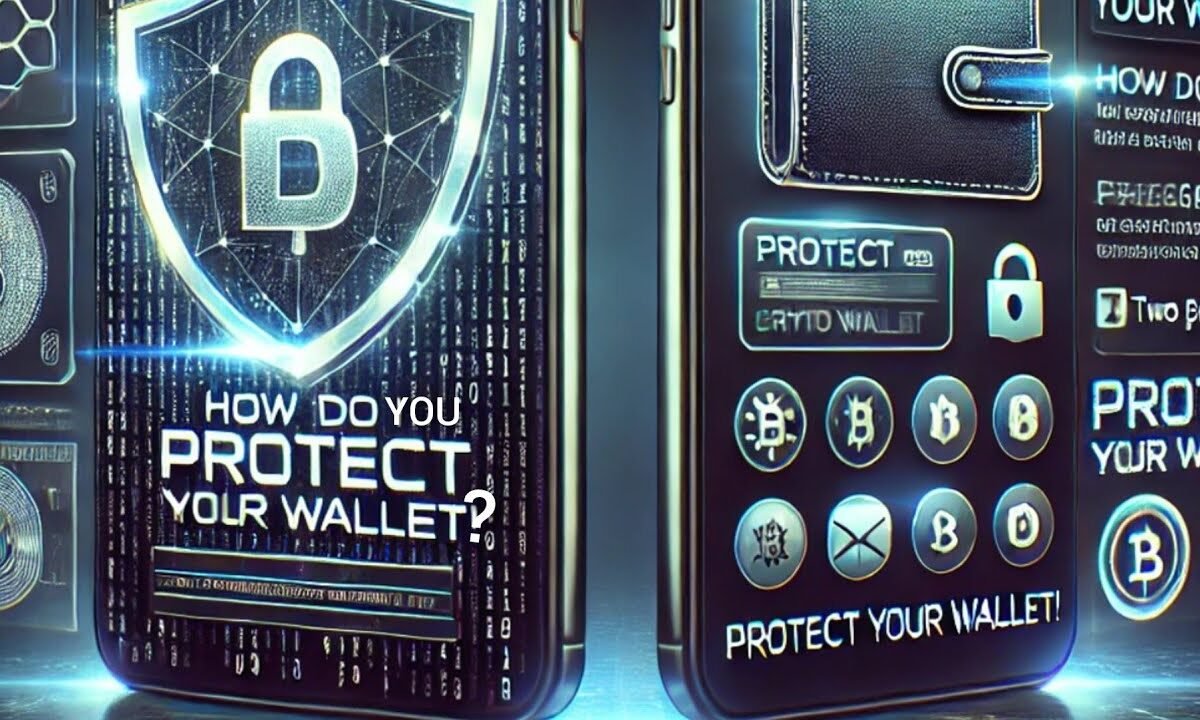Introduction
Cryptocurrencies have redefined the way we think about money and financial freedom, but with this revolutionary power comes significant risk. Your wallet — whether digital or hardware — holds your most valuable crypto assets. If it falls into the wrong hands, the loss is often irreversible.
In this comprehensive guide, we’ll explore everything you need to know about crypto wallet protection, including types of wallets, common threats, and proven strategies to secure your digital fortune.
Understanding Crypto Wallets
A crypto wallet is a digital tool that stores your private keys and interacts with various blockchain networks. Contrary to popular belief, wallets don’t store actual coins—they store the cryptographic keys that give access to your cryptocurrency.
There are two main types of wallets:
1. Hot Wallets
Hot wallets are connected to the internet and include:
-
Mobile wallets (e.g., Trust Wallet, MetaMask)
-
Desktop wallets
-
Web-based wallets (e.g., Coinbase, Binance)
Pros: Convenient for frequent trading
Cons: More vulnerable to hacking, phishing, and malware attacks
2. Cold Wallets
Cold wallets are offline and include:
-
Hardware wallets (e.g., Ledger, Trezor)
-
Paper wallets
-
Air-gapped devices
Pros: Extremely secure, immune to online threats
Cons: Less convenient for everyday use
Top Threats to Wallet Security
1. Phishing Attacks
Phishing is one of the most common attacks where users are tricked into revealing their seed phrases or passwords. Scammers may use fake websites, social media accounts, or email campaigns to impersonate trusted platforms.
2. Malware and Keyloggers
Certain malware programs are designed to log your keystrokes or screen activity, stealing credentials and private keys when you access your wallet.
3. Fake Wallet Apps
Malicious apps on app stores mimic legitimate crypto wallets and are designed to steal funds the moment a user enters their seed phrase.
4. Social Engineering
This involves manipulating people into revealing confidential information, often through trust-building tactics.
5. SIM-Swapping
Attackers transfer your phone number to a new SIM card and use it to reset your exchange or wallet passwords by intercepting SMS-based two-factor authentication (2FA) codes.
Best Practices for Crypto Wallet Protection
1. Use Hardware Wallets for Long-Term Storage
Hardware wallets are considered the gold standard in wallet security. They store your private keys offline, and any transaction requires physical confirmation on the device.
Recommended Hardware Wallets:
-
Ledger Nano X
-
Trezor Model T
2. Never Share Your Seed Phrase
Your seed phrase (also called a recovery phrase) is the master key to your wallet. If someone has it, they have total control over your crypto.
Tips:
-
Write it down on paper and store it securely
-
Do NOT store it in digital files or cloud storage
-
Consider using a metal backup for fire and water resistance
3. Enable Two-Factor Authentication (2FA)
Always enable 2FA on exchanges and wallets that support it. Use apps like Google Authenticator or Authy instead of SMS.
4. Use a Strong, Unique Password
Create complex passwords and avoid reusing them across platforms. Consider using a password manager like Bitwarden or 1Password.
5. Keep Software Up to Date
Always update your wallet apps, firmware, and antivirus software. Updates often include critical security patches.
6. Verify URLs and Sources
Bookmark your wallet and exchange URLs, and never click on links from untrusted emails, ads, or DMs. Always double-check the domain.
7. Consider a Multisig Wallet
Multisignature wallets require multiple keys to authorize a transaction. This adds an extra layer of protection, especially for businesses or shared wallets.
8. Don’t Use Public Wi-Fi
Avoid accessing your wallet or making transactions over public or unprotected Wi-Fi networks. If necessary, use a VPN.
Advanced Security Tips
Use Cold Storage Vaults
For high-net-worth investors, setting up a cold storage vault using a combination of air-gapped computers, USB backups, and multi-factor access can provide enterprise-level protection.
Split Your Funds Across Wallets
Don’t keep all your crypto in a single wallet. Use one for trading and another for savings. This limits exposure if one gets compromised.
Use Decoy Wallets (Optional)
Some advanced users maintain a small-fund wallet as a decoy in case of physical theft or coercion.
Monitor Wallet Activity
Use services that notify you of transactions from your wallet address. This can help detect unauthorized activity early.
Real-Life Cases of Wallet Breaches
Case 1: Electrum Wallet Phishing Attack
A fake update prompt led users to install a malicious version of Electrum wallet, resulting in over $4 million in stolen crypto.
Case 2: MetaMask Impersonators
Numerous users have lost funds by entering their seed phrase into fake MetaMask apps found on app stores or Google ads.
Case 3: Ledger Email Leak
A data breach at Ledger exposed customer emails, leading to phishing emails impersonating the company and stealing wallet credentials.
What To Do If Your Wallet is Compromised
-
Immediately transfer remaining funds to a new secure wallet.
-
Revoke permissions via blockchain explorers like Etherscan.
-
Report the theft to authorities and crypto communities.
-
Audit your devices and accounts for malware or compromised apps.
-
Never reuse the same seed phrase or credentials.
Conclusion
Crypto wallet protection isn’t just about software or hardware — it’s a mindset. Staying secure means adopting smart habits, staying skeptical of unsolicited communications, and constantly evolving your defenses. Whether you’re a beginner or a seasoned investor, taking your wallet security seriously could mean the difference between wealth and loss.





